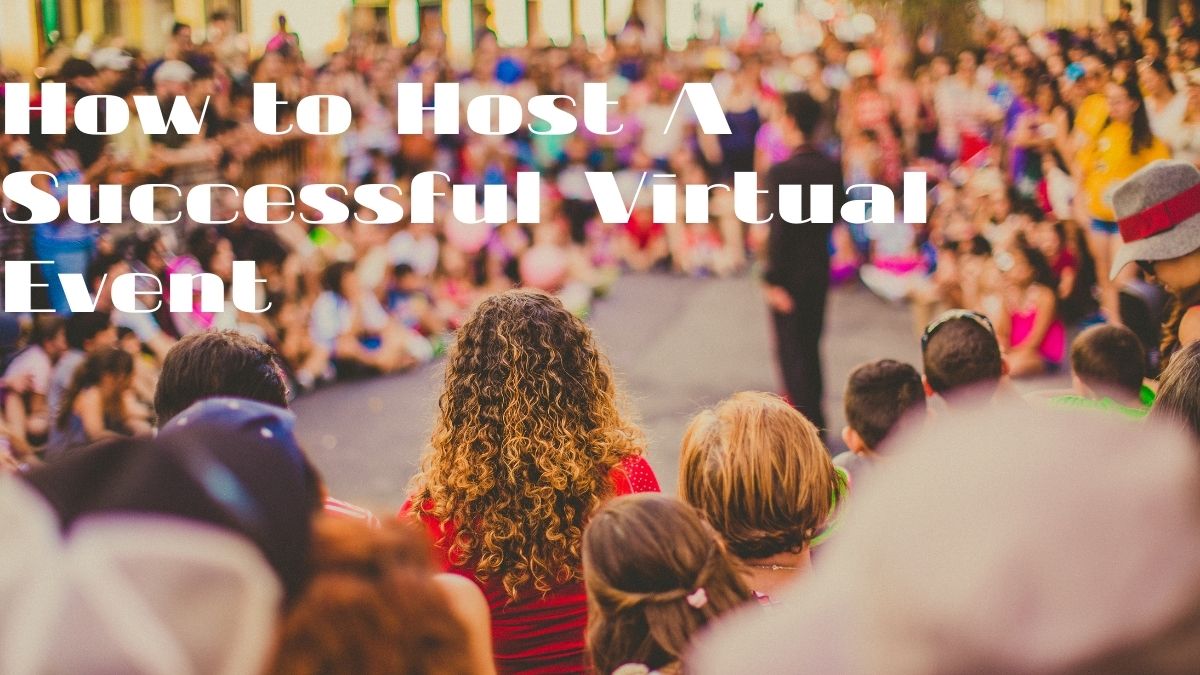Edtech
How to Host A Successful Virtual Event

If we learned anything from the year 2020, pandemics are terrible. However, humans can adapt to change easily and quickly, which is one of the best things. Many industries had to change and innovate (as the saying goes, evolve or die) because of the pandemic, especially the events industry. Although virtual events were still popular before 2020, the pandemic accelerated their adoption. In 2020 alone, the number of companies or organizations that planned and used virtual events doubled, and the virtual events were a resounding success.
About 84% of all the companies that ran virtual events reported spending less than they used on physical/in-person events. Using virtual events over in-person events has also been great for the environment. The streaming experience can lower the total pollution of the climate by 60%-98%.
However, the promising statistics do not mean that planning virtual events is less challenging. Therefore, we thought we could offer some help. This post will learn how to host a successful virtual event.
Define How Success Looks like
What are you trying to achieve? This is a vital question to ask yourself before embarking on your virtual event hosting/planning. Do you want to have a specific number of participants/attendees? How many signups do you want to have after the event? Is the event geared towards increasing sales? Selecting a quantifiable primary objective that may even be used as a success indicator is essential.
After doing this, you can begin planning the virtual event with your main objective in mind. Ensure that every action you take or anything you do gets you closer to achieving the goal. Knowing your objectives can help you undertake activities geared towards achieving them.
Differentiate Your Event
You want the virtual event to be current, and that is alright. However, this doesn’t mean you copy what the other people are doing. To remain successful, you must think about how you remain different from the competitors. To achieve this, lean into the audience’s insights and look for an ideal solution to your problem. You must be creative and bold, ensuring you act like a leader. Streaming your virtual event and assuming it was successful isn’t enough. As a brand, you must convey who you are and ensure you are personal and professional with the attendees.
Plan Out the Practical Elements
When hosting a virtual event, you might be tempted to think there’s much less than you should then when or if you were to plan a physical event. In so far as you don’t need to worry about hiring a venue, security, transport, and so on, that notion might be true. However, there’re still some practical elements that you still need to consider.
You will still need to set aside some budget estimates and decide the amount of money you are willing to spend on guest speakers, promotions, among other things. As the host, you will still have to determine when best to hold the event, both time and date. You may have to hire or purchase some microphones, a good camera, and lighting.
Choosing the Right Platform
You will also have to decide the video conferencing tool you will use. Although there are many tools out there, at the moment tools like Google Meet and Microsoft teams (free for sixty minutes and up to 100 participants) are the most popular in the market. Zoom, which is free for forty minutes and up to 100 participants, is also quite popular. However, these platforms also feature premium versions if you host a larger event. When planning the practical elements of the virtual event, keep everything in one place. This makes them a lot easier to track.
When selecting the tool, ensure it has the most engagement features like chat boxes, pooling mechanisms, and Q&A discussion boards. Remember, online attendees have a short attention time and might suffer “Zoom Fatigue.” Hence, you want a platform that keeps them engaged to ensure they concentrate on the event.
Create The Event Itinerary
Upon establishing your goals and deciding on your virtual event’s practicalities, it is not time to consider what will happen on the event day. By planning the itinerary from start to finish, you will be ensuring that everybody remains on track and you do not miss anything. This will also help you achieve the objectives you had set at the beginning. Span out the day and ensure that everybody knows their role. The plan should also include some short periods of “buffer time” in the entire day.
The buffer time provides for any breaks or technical difficulties that you may want to factor into the virtual event. It also ensures that you do not run over schedule if certain sessions continue longer than you had previously intended. Keeping the itinerary fluid until the virtual event is considered a best practice. This lets you swap out the guests who cancel and insert new speakers in their place, and ensure things are running as expected. When planning your itinerary, you can use an online tool and share it with your team members for feedback. Such tools also offer real-time collaboration among the team members without leaving the platform.
Partner With People
Although your virtual event will not be in-person, inviting some guests is still a great way of improving attendance. According to a study conducted by Wild Apricot in 2020, about 70% of the companies or organisations had a higher attendance at their event held virtually if they featured one guest at least. However, reaching out to various people and keeping track of the communications you’ve had with them can prove messy. This issue can be overcome by using a tool like Kanban.
Market Your Event
How can you ensure people attend your virtual event? By telling them about it. Ensure you use as many marketing channels as you can or have access to. Create hype and promote the event on social media or broadcast and print media. Keep reminding the attendees of the event date and time and the featured guest speaker.
Engage Your Audience
The attendees in a virtual event have a short attention span. Hence, they don’t need a lecture. Instead, plan your activities to involve the attendee’s active participation. Encourage the attendees to converse with one another and through some questions to the host or moderator.
Post-Event Follow Up
Ensure you reach out to the attendees or participants and inform them how they can access the recordings of your virtual events. At this stage, you can ask for some feedback on their experience in your event. At the same time, encourage the participants to join the event next time.
Debrief
When the virtual event is over, connect with your team and go through what worked and what did not. One of the advantages of using a virtual event platform like Eventtia is recording the entire event. By reviewing what worked and what didn’t, you can get some insights to help you be better prepared next time. You can also use the platform’s analytics to find the attendees’ engagements and the number of attendees, among other analytics.
Conclusion
Technological advancements are sweeping every industry, with some being driven by necessity. The event industry is not left behind. Although most had thought that people would return to in-person events after things return to normalcy, virtual events are here for the long term. Now that you know how to host a successful virtual event, it is time to enjoy the benefits of technology in the event industry.
-

 Cyber Risk Management3 days ago
Cyber Risk Management3 days agoHow Much Does a Hosting Server Cost Per User for an App?
-

 Outsourcing Development3 days ago
Outsourcing Development3 days agoAll you need to know about Offshore Staff Augmentation
-

 Software Development3 days ago
Software Development3 days agoThings to consider before starting a Retail Software Development
-

 Grow Your Business2 days ago
Grow Your Business2 days agoThe Average Size of Home Office: A Perfect Workspace
-
Solution Review2 days ago
Top 10 Best Fake ID Websites [OnlyFake?]
-
Business Imprint3 days ago
How Gaming Technologies are Transforming the Entertainment Industry
-

 Gaming Technologies14 hours ago
Gaming Technologies14 hours agoHow to Set Up Text-to-Speech for Channel Points on Twitch







